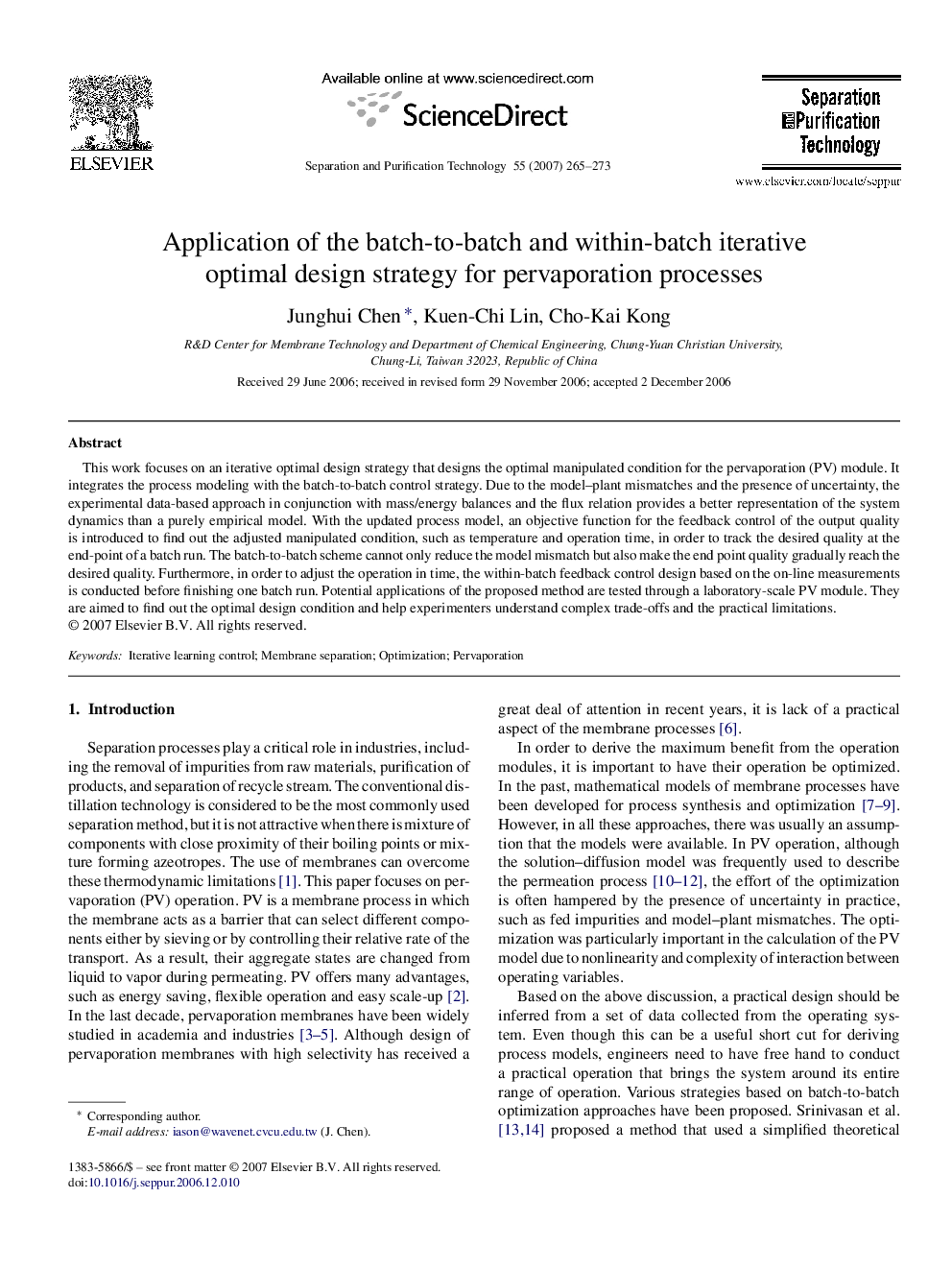| Article ID | Journal | Published Year | Pages | File Type |
|---|---|---|---|---|
| 643842 | Separation and Purification Technology | 2007 | 9 Pages |
This work focuses on an iterative optimal design strategy that designs the optimal manipulated condition for the pervaporation (PV) module. It integrates the process modeling with the batch-to-batch control strategy. Due to the model–plant mismatches and the presence of uncertainty, the experimental data-based approach in conjunction with mass/energy balances and the flux relation provides a better representation of the system dynamics than a purely empirical model. With the updated process model, an objective function for the feedback control of the output quality is introduced to find out the adjusted manipulated condition, such as temperature and operation time, in order to track the desired quality at the end-point of a batch run. The batch-to-batch scheme cannot only reduce the model mismatch but also make the end point quality gradually reach the desired quality. Furthermore, in order to adjust the operation in time, the within-batch feedback control design based on the on-line measurements is conducted before finishing one batch run. Potential applications of the proposed method are tested through a laboratory-scale PV module. They are aimed to find out the optimal design condition and help experimenters understand complex trade-offs and the practical limitations.
